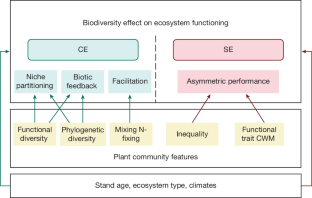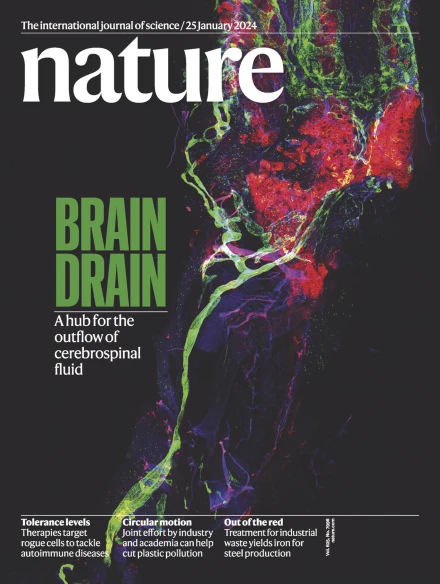Meta-analysis reveals global variations in plant diversity effects on productivity
IF 50.5
1区 综合性期刊
Q1 MULTIDISCIPLINARY SCIENCES
引用次数: 0
Abstract
Positive effects of plant diversity on productivity have been globally demonstrated and explained by two main effects: complementarity effects and selection effects1–4. However, plant diversity experiments have shown substantial variation in these effects, with driving factors poorly understood4–6. On the basis of a meta-analysis of 452 experiments across the globe, we show that productivity increases on average by 15.2% from monocultures to species mixtures with an average species richness of 2.6; net biodiversity effects are stronger in grassland and forest experiments and weaker in container, cropland and aquatic ecosystems. Of the net biodiversity effects, complementarity effects and selection effects contribute 65.6% and 34.4%, respectively. Complementarity effects increase with phylogenetic diversity, the mixing of nitrogen-fixing and non-nitrogen-fixing species and the functional diversity of leaf nitrogen contents, which indicate the key roles of niche partitioning, biotic feedback and abiotic facilitation in complementarity effects. More positive selection effects occur with higher species biomass inequality in their monocultures. Complementarity effects increase over time, whereas selection effects decrease over time, and they remain consistent across global variations in climates. Our results provide key insights into understanding global variations in plant diversity effects on productivity and underscore the importance of integrating both complementarity and selection effects into strategies for biodiversity conservation and ecological restoration. A meta-analysis of biodiversity effects on plant productivity found that complementarity effects increased over time whereas selection effects decreased, and both remained consistent across global variations in climate.


荟萃分析揭示了植物多样性对生产力影响的全球变化
在全球范围内,植物多样性对生产力的积极影响已被证明并通过两种主要效应来解释:互补效应和选择效应1,2,3,4。然而,植物多样性实验表明,这些影响存在很大差异,而驱动因素尚不清楚4,5,6。基于对全球452个实验的荟萃分析,我们发现从单一栽培到物种混合,生产力平均提高了15.2%,平均物种丰富度为2.6;净生物多样性效应在草地和森林试验中较强,在容器、农田和水生生态系统中较弱。在净生物多样性效应中,互补效应和选择效应分别占65.6%和34.4%。互补效应随着系统发育多样性、固氮和非固氮物种的混合以及叶片氮含量的功能多样性而增加,表明生态位分配、生物反馈和非生物促进在互补效应中起着关键作用。在单一栽培中,物种生物量不平等越大,选择效应越积极。互补效应随着时间的推移而增加,而选择效应则随着时间的推移而减少,并且它们在全球气候变化中保持一致。我们的研究结果为理解植物多样性对生产力影响的全球变化提供了重要见解,并强调了将互补效应和选择效应整合到生物多样性保护和生态恢复策略中的重要性。
本文章由计算机程序翻译,如有差异,请以英文原文为准。
求助全文
约1分钟内获得全文
求助全文
来源期刊

Nature
综合性期刊-综合性期刊
CiteScore
90.00
自引率
1.20%
发文量
3652
审稿时长
3 months
期刊介绍:
Nature is a prestigious international journal that publishes peer-reviewed research in various scientific and technological fields. The selection of articles is based on criteria such as originality, importance, interdisciplinary relevance, timeliness, accessibility, elegance, and surprising conclusions. In addition to showcasing significant scientific advances, Nature delivers rapid, authoritative, insightful news, and interpretation of current and upcoming trends impacting science, scientists, and the broader public. The journal serves a dual purpose: firstly, to promptly share noteworthy scientific advances and foster discussions among scientists, and secondly, to ensure the swift dissemination of scientific results globally, emphasizing their significance for knowledge, culture, and daily life.
 求助内容:
求助内容: 应助结果提醒方式:
应助结果提醒方式:


